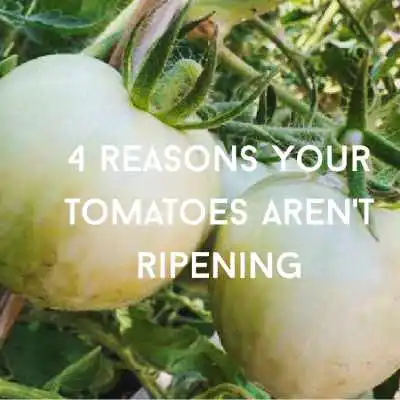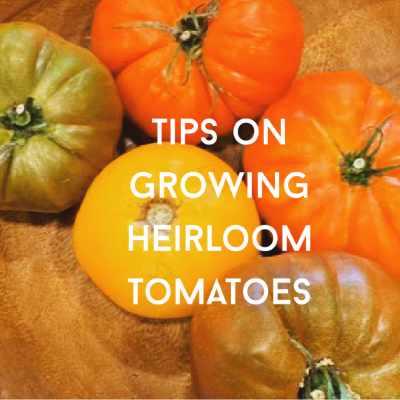Tomatoes are usually on the top of every gardeners’ list. For good reason too. Nothing beats the taste of a home grown tomato. Let’s grow tomatoes !
The post may contain affiliate links. Please read our disclosure policies. If you purchase after clicking an affiliate link we may receive small commission at no cost to you. As an Amazon Associate I earn from qualifying purchases. All opinions remain our own.
Tomatoes are part of the nightshade or Solanaceae family of plants. They can be eaten raw and used in a variety of dishes.
How to Grow Tomatoes in Arizona
- Tomato Growth Habits
- Types of Tomatoes
- When and how to plant tomatoes
- Tomato companion planting
- How to care for tomato plants
- Staking or caging tomatoes
- Frost cloth and shade cloth
- Harvesting tomatoes-when is the ideal time to pick tomatoes?
Tomato Growth Habits
Tomato plants have two growth habits: determinate and indeterminate.
Determinate tomato plants grow a few feet high and produce all of their tomatoes for one harvest. Indeterminate tomato plants grow tomatoes throughout the growing season.
Indeterminate Tomatoes
If you’re looking to grow tomatoes for your salads or burgers then an indeterminate plant is the best choice. Indeterminate tomato plants grow taller than determinate types, some reaching heights of five feet or more. Indeterminate tomatoes will need a lot of space.
Determinate Tomatoes
If you’re looking for a large harvest of tomatoes within a few weeks a determinate plant would be the best choice. In areas with a short growing season, like Arizona, these types of tomatoes are ideal. If you have limited space this is also your best choice.
Tomato paste is often made with determinate tomatoes. Determinate tomato plants grow like a bush until it reaches a genetically predetermined height, usually a few feet.
Ideally if you plant both types you’ll have all of your favorite tomato varieties to pick from.
Tomato Varieties
Very few edible foods have as many varieties to choose from as tomatoes. Varieties of tomatoes include:
- heirloom (most are indeterminate)
- beefsteak (can be both)
- roma (determinate)
- tigerella (indeterminate)
- cherry (indeterminate) round in shape
- grape are oblong in shape
Tomatoes I am Currently Growing:
Cherokee Purple tomatoes, Beefsteak tomatoes, Sweet 100 Tomatoes, Tomato Pineapple, and Green Zebra tomatoes.
When to Plant Tomatoes
Tomatoes are warm-season vegetables. They do not tolerate cold weather well. Tomatoes prefer the soil temperature to be around 70 to 75 degrees Fahrenheit. Once temperatures rise above 90 degrees tomatoes are likely to stop pollinating and fruit may not ripen.
The Ideal Time to Plant Tomatoes in Arizona
Since tomatoes need a temperature between 55 degrees and 90 degrees Fahrenheit to produce fruit there is a small window of opportunity to transplant your tomatoes in Phoenix and Tucson. The ideal time to plant tomato transplants in the low desert is between mid-February and March.
If you want to grow tomatoes by seed start them indoors in December, so they’re ready to move outside in the Phoenix area mid-February.
Resource: Find out the first and last frost dates in your local area.
Why are transplant tomatoes more successful in Phoenix?
We usually hit the first 90 degree day temperature by the end of March and by May 90 degrees + will be a daily occurrence. This is not the ideal temperature for tomatoes. Your tomato plants need a head start in order to produce fruits in this short period of time.
If you live in Flagstaff or Prescott transplant tomatoes outside in May and June.
For best results, plant tomatoes outside after the threat of frost. If there is a late season frost be sure to protect your tomato plants by covering them with a frost cloth.
Early season varieties and transplant tomatoes work best.
My Experience
If it is the first time planting tomatoes I recommend choosing an early season variety. Start seeds indoors (6-8 weeks before the last frost) or purchase transplants and plant outside in February (if in gardening zone 9b) or after the danger of frost has passed.
If you live in a warm climate and don’t mind taking some extra steps you can plant tomatoes in the fall and then cover them when it gets cold. I start my tomato seeds indoors and transplant them in the fall and in February. I cover any plants outside when the temperature drops and provide shade during the summer.
How to Plant Tomatoes
Tomato plants need room to grow. They can grow up to 5 feet in height and spread up to 3 feet. They need a minimum of one square foot of space per plant. Tomatoes are heavy fruit, provide your plant with support.
Planting Seeds
Start seeds indoors in a starter tray. Sow seeds 1/4 inch under the soil and keep moist for 7-14 days or until seedlings emerge. Provide plenty of light such as a windowsill or grow light. Transplant outdoors in 6-8 weeks.
Transplanting Tomatoes
Dig a hole the width of the tomato roots or to accommodate the root ball and about 8-10 inches deep. You can bury a tomato plant to it’s first set of leaves. This will help encourage strong root growth and provide support for the plant.
It is much easier to cage or stake the tomato plant at this time. Providing support for your plant will result in larger fruit production. If you don’t provide support for your tomato plant it will sprawl on the ground.
Water after transplanting. Water 2-3 times per week.
Grow Tomatoes in Pots
If you’re growing tomatoes in pots versus in-ground, use a minimum of 5-gallon pot. Water deeply. Containers heat up the soil faster, so you will need to water more frequently than if planted in-ground.
If you live in the low desert provide shade for your tomato plants during the summer months and water deeply. They will not produce during the summer, but once the intense heat subsides, they will start producing again in the fall.
How to Support Tomato Plants
For taller varieties provide a tomato cage or trellis to support your tomato plants. We like to use bamboo sticks and flexible garden ties to support our tomato plants. As the plant grows you can easily adjust the tape.

K-Brands Tomato Cage Support Cage Trellis
Support tomato plants with these strong, steel core with a sturdy, thick plastic coating cages.
Companion Plants for Tomatoes
What grows well near tomatoes and what doesn’t? Tomatoes enjoy the company of carrots, onions, parsley, and chives. They do not like plants from the cabbage family. Do not plant near cabbage, cauliflower or potatoes.
How to Care for Tomatoes
Tomatoes do not tolerate cold weather, but they don’t like intense heat either. They are warm season vegetables which means they cannot tolerate frost.
To extend your growing season cover your tomato plants if temperatures fall below 40 degrees and when the temperatures start climbing into the triple digits. In Phoenix, I start providing shade in early June.
Light Requirements: Tomatoes need full sun or about 6-8 hours of sun a day. Plant tomatoes where they will receive enough sun to grow and produce fruit.
Soil Requirements: Prefers fertile well-drained soil. Tomatoes can grow in any soil if it has good drainage. Tomatoes prefer slightly acidic pH. The soil pH range of 6 -6.5 is ideal.
Water Requirements: Like most vegetables and fruits, tomatoes like moist soil. Water tomato plants three times per week during their growing season or as needed. Tomatoes can crack if they are allowed to dry out and then watered too much.
Garden Bamboo Sticks
Natural bamboo sticks are a strong and durable way to support your plants, such as tomatoes.
Frost Cloth & Shade Cloth
Warm season veggies like tomatoes cannot tolerate frost. If you want to extend your growing season cover tomato plants with a frost cloth if the temperatures dip.
Tomatoes can survive the intense Phoenix summers if they are provided shade. They like heat and need it to grow, but they cannot stand the intense summer heat of Phoenix without some help. To extend the growing season use a shade cloth during the hot summer months and water deeply. If the temperature gets above 90 degrees tomatoes will not produce as well. My tomato plants can live many years if covered during periods of frost and intense heat, but they don’t produce fruit during the summer.
Blanket Plant Cover
Protect your plants from frost damage with a lightweight cover. Allows the sun to shine through and protects from frost.
Harvest Tomatoes
Tomato harvest times vary from 50-80+ days depending on the variety planted. In Phoenix it is preferable to plant early-season varieties. In the low desert transplanted tomato plants are ready to harvest between mid-March and May.
Gardening for Beginners: How to Grow Vegetables in Phoenix Arizona
Looking for other vegetables to plant? Find more here:

Ahh, Beefsteak the king of the slicing tomatoes! Beefsteak tomato vegetable seeds produ… [More]

Ask any chef or gourmet, and they are likely to tell you that the premier tomato for fi… [More]

Grow Heirloom Tomatoes – Small Red Cherry Tomato Seeds. High yielding Small Red Cherry … [More]











